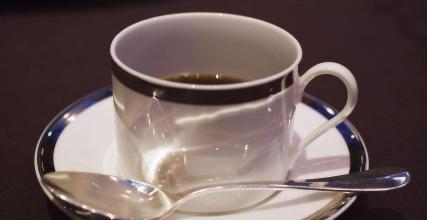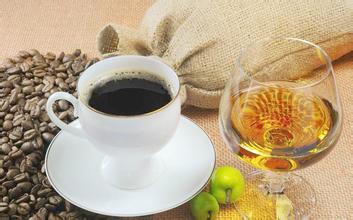The Historical Origin of the production and Development of Coffee flowers
First, the production of milk foam
1. Pour the milk into the milk bubble pot, and the amount should not exceed 1 / 2 of the milk bubble pot, otherwise the milk will spill over due to expansion when making the milk bubble.
2. Heat the milk to about 60 degrees, but not more than 70 degrees, otherwise the protein structure in the milk will be destroyed. Be careful! The lid and strainer cannot be heated directly. (for example, make ice foam to cool the milk below 5 degrees Celsius, of course, do not overfreeze the milk and let the milk freeze. )
3, cover the lid and the filter, quickly twitch the filter to press the air into the milk, there is no need to press to the end, because it is to pump the air into the milk, so as to act on the surface of the milk; the number of times is not too much, gently twitch about 30 times.
4. Remove the lid and strainer and scrape off the thick foam with a spoon, leaving dense hot (ice) foam.
Second, the way of flower drawing.
1. To cook Espresso, it is recommended to put the Espresso directly into the desired cup. Then hit the milk foam, after completion, if there is a thicker milk foam floating on the surface, please remove it. 2. Slowly pour the milk foam into the newly finished Espresso. When the foam is fully mixed with the Espresso, the surface will be thick, and this is the time to start drawing flowers (usually the cup is half full).
3. The beginning of the pull flower is to shake the wrist holding the flower cup from left to right, and the key point is to steadily make the wrist shake horizontally to the left and right. Please note that this action only requires the strength of the wrist, not the whole arm. When the shake is correct, the cup will begin to show white "zigzag" foam marks.
4. Gradually move the flower cup back, and reduce the range of the shaking. Finally, when you close the cup, draw a thin line along the front and draw the stem of the leaves in the cup as the end.

Important Notice :
前街咖啡 FrontStreet Coffee has moved to new addredd:
FrontStreet Coffee Address: 315,Donghua East Road,GuangZhou
Tel:020 38364473
- Prev

Introduction to the origin and development of coffee the use of curling kettle
There are many legends about the discovery of coffee. There is a legend that in the 13th century, there was a prince in Ethiopia who found that his camel loved to eat a small oar fruit on a bush, and he was very excited and energetic after eating it. So he also picked some small berries to taste, and finally discovered this refreshing coffee drink coffee flower. Another legend is that Gong
- Next

The practice and tools of ice drop coffee the capacity of a standard latte cup
Production method Editing raw materials: ice drop coffee pot 1 group; bean grinder 1; round filter paper 1; Gala Minita coffee bean 40 g; East Africa Kenya coffee bean 40 g; Sumatra Mantenin coffee bean 40 g; boiling water 500ml; ice cube right amount; full fat fresh milk; fructose; practice 1. Place the filter in the middle pot to prevent the coffee powder from flowing into the lower pot. two。 All coffee beans are ground to a fine grind
Related
- Does Rose Summer choose Blue, Green or Red? Detailed explanation of Rose Summer Coffee plots and Classification in Panamanian Jade Manor
- What is the difference between the origin, producing area, processing plant, cooperative and manor of coffee beans?
- How fine does the espresso powder fit? how to grind the espresso?
- Sca coffee roasting degree color card coffee roasting degree 8 roasting color values what do you mean?
- The practice of lattes: how to make lattes at home
- Introduction to Indonesian Fine Coffee beans-- Java Coffee producing area of Indonesian Arabica Coffee
- How much will the flavor of light and medium roasted rose summer be expressed? What baking level is rose summer suitable for?
- Introduction to the characteristics of washing, sun-drying or wet-planing coffee commonly used in Mantenin, Indonesia
- Price characteristics of Arabica Coffee Bean Starbucks introduction to Manning Coffee Bean Taste producing area Variety Manor
- What is the authentic Yega flavor? What are the flavor characteristics of the really excellent Yejasuffi coffee beans?

